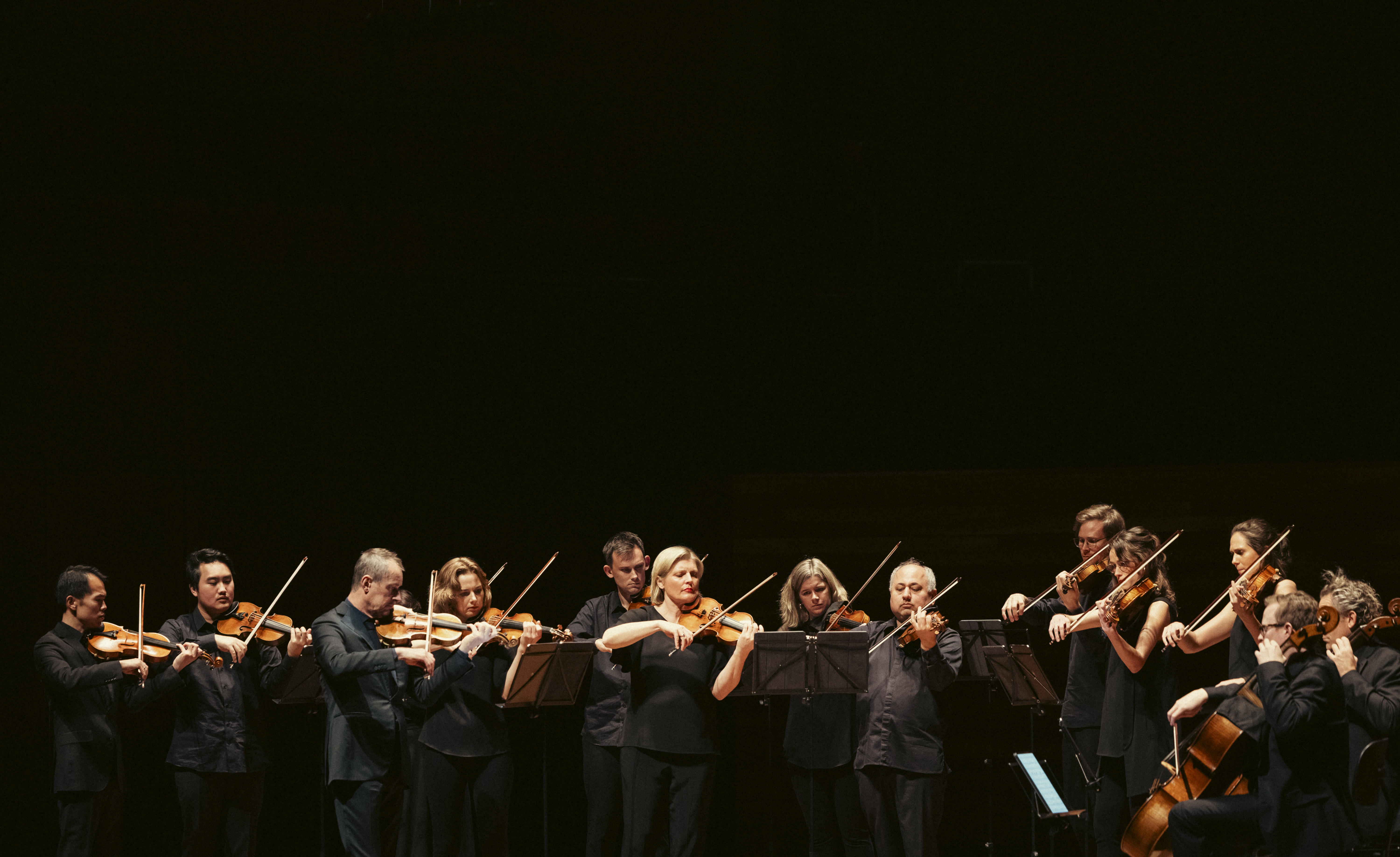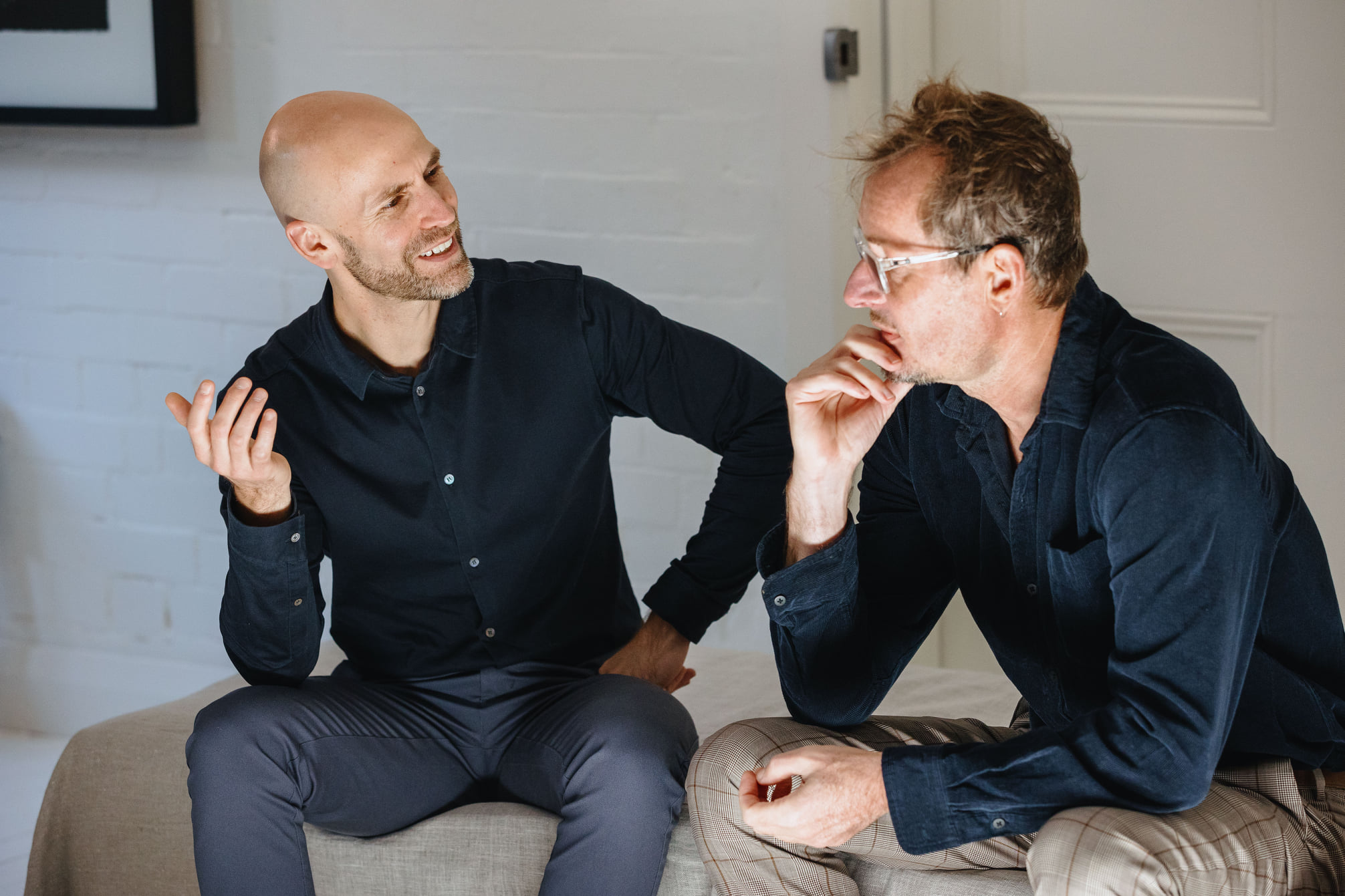
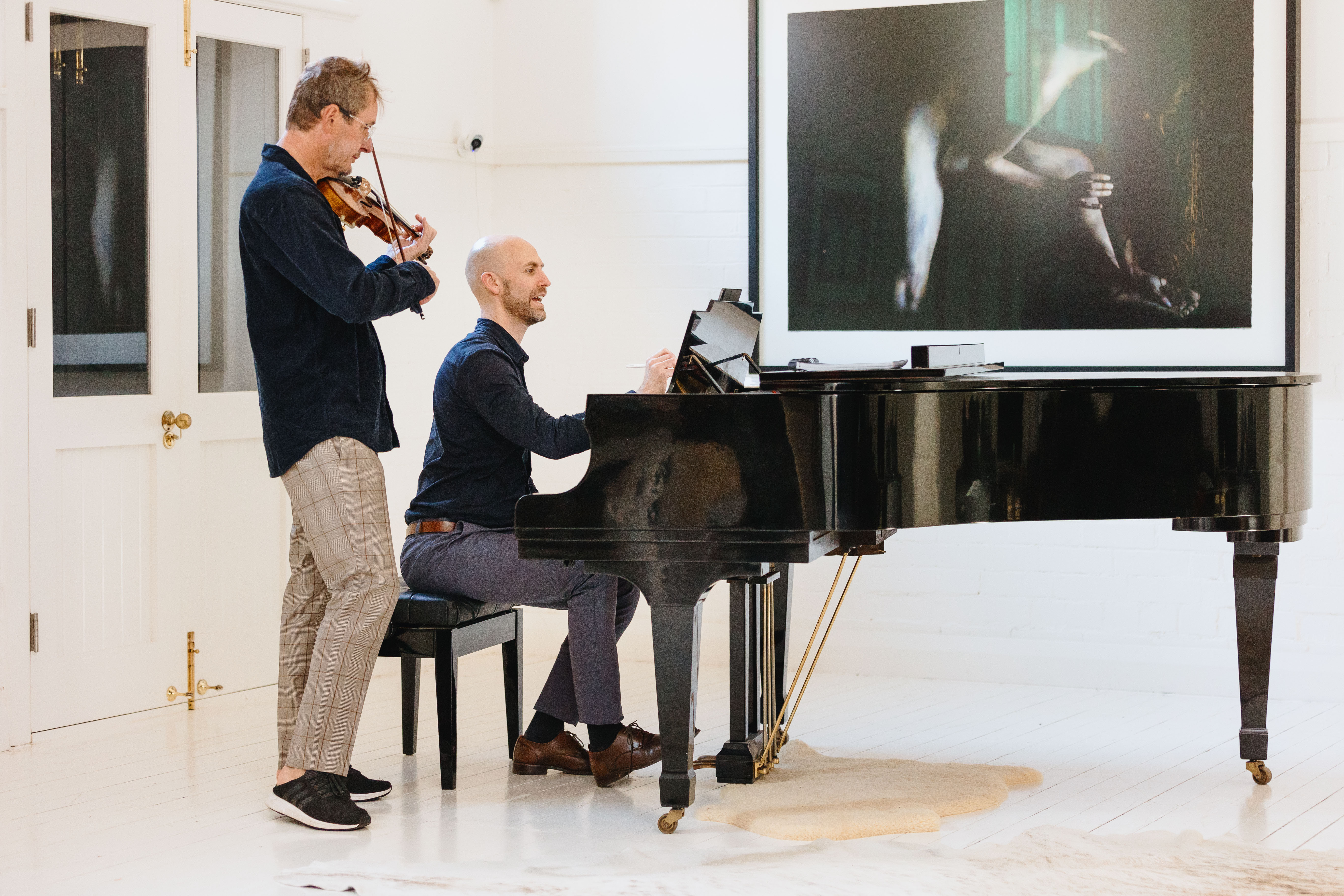
In 2022, the ACO will embark on a transformative new era as it resumes its national and international touring activities with gusto. Artistic Director Richard Tognetti took a moment to reflect on the past 18 months and his hopes for the future - we share his poetic musings with you below.
Sometime in the distant past, a group of musicians trod the boards of concert halls throughout a vast, bare land; and sometimes they also played in other places in a world now distant. Then, eerily, all things musical were cut to silence under orders, strict, that the people stay away; and so the musicians were left to themselves, and memories of concerts began to fade.
The dust gathered in the aisles where people used to walk, stirred expectant with their murmurings, and the halls were dimmed, and the seats were raised where they used to sit awaiting the music to begin.
The foyers stood empty where the people used to amble, brimming with sensations of communion; having sat side by side absorbed by sounds made by the group of musicians.
During the fallow period and as time passed, the musicians lost a sense of utility, but were checked by the support that flowed to them through the generosity of the people. And then with the passing of winter, green shoots appeared; people began to flow back to the watering holes, where beer and other beverages were sold.
The musicians gazed from their windows; imagining too; imagining that they would be permitted once more to tread the boards and stir the thick dust that had gathered in the concert halls of the vast, bare land.
And so it came to pass that some of these watering holes were once more filled with the afterglow of performance. People once more would travel beyond, and into the concert halls, where they could flock and mingle and await the group of musicians to gather; and then we will strum and pluck and weave and conjure; once again.
Richard Tognetti
Artistic Director & Lead Violin

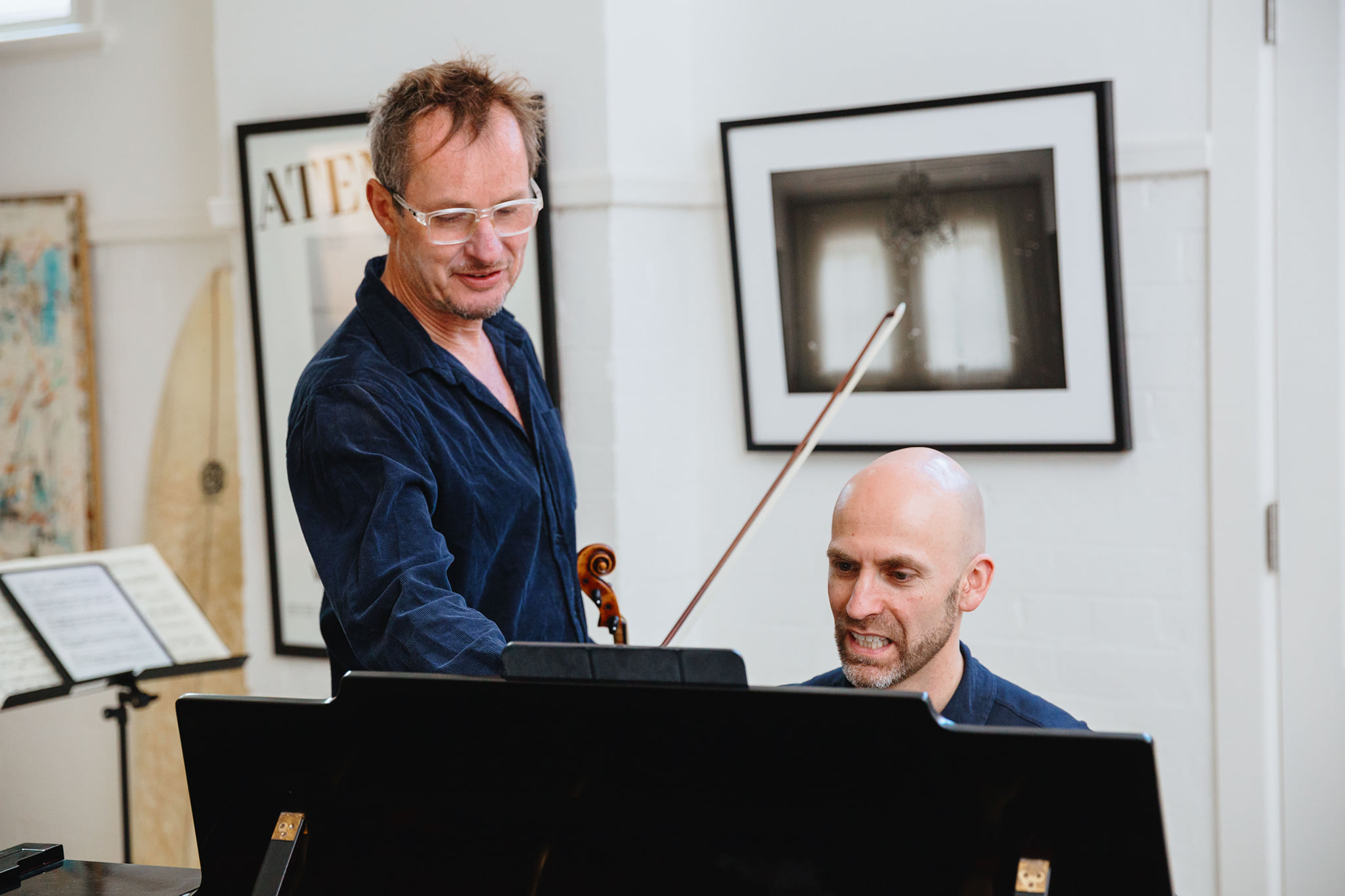
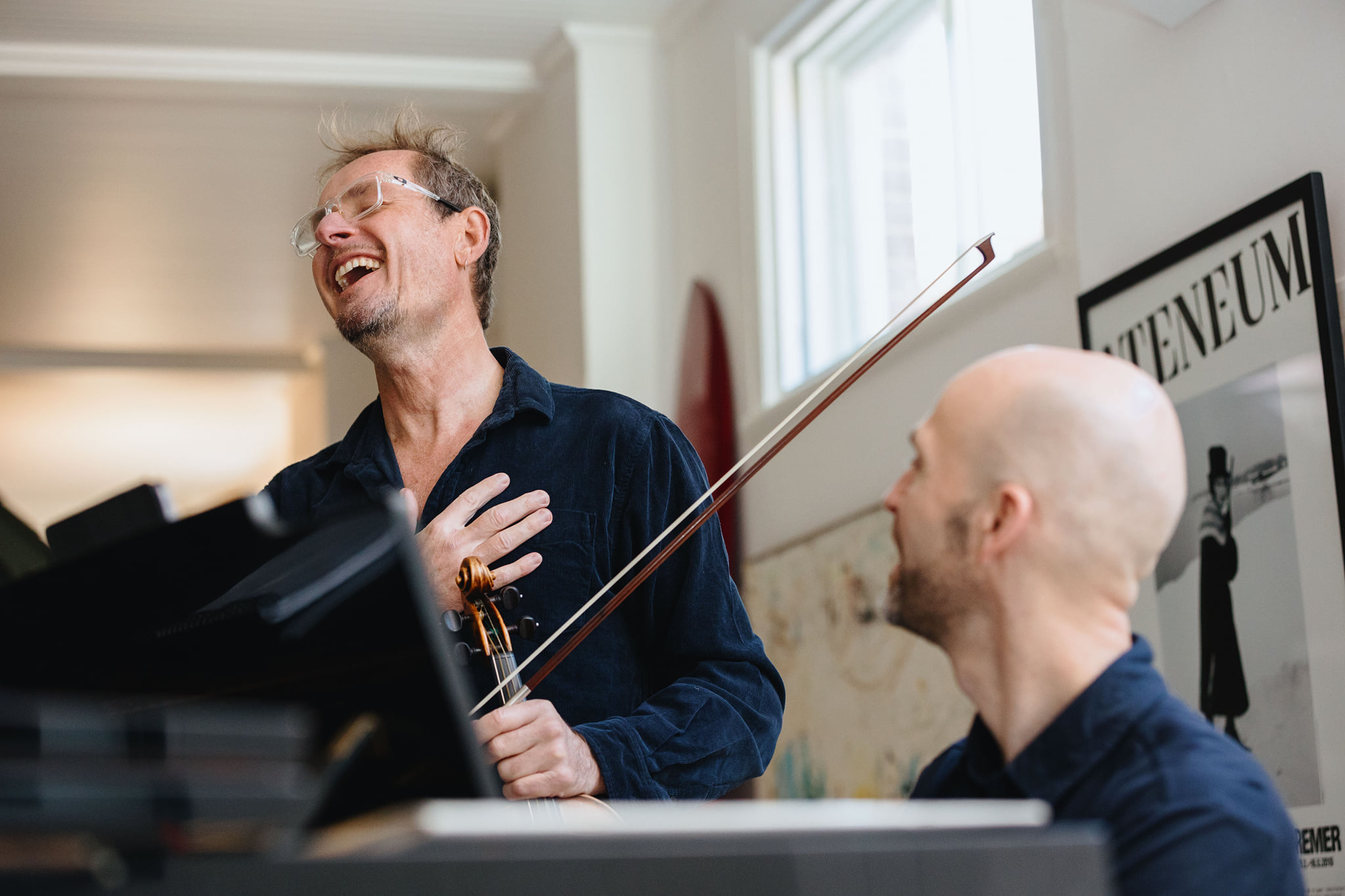
Richard Tognetti and I have been close mates for more than two decades. Over many years of conversation, a topic we often return to is the fascinating movement that is “historical performance practice”. Although it’s ostensibly aimed at recreating practices, sounds and instruments of the past, you can argue that much of the movement is rooted in our own contemporary tastes and predispositions.
It’s easy to build a period instrument, but very difficult to conjure a period audience, which was often noisy and inattentive but also passionate and engaged. We started our conversation with this idea.
EH: You’ve programmed an eclectic mix of music for Baroque Revelry. It spans over 150 years and a range of national styles. What binds it all together? I notice you’ve described it as a “sordid musical romp”.
RT: It all starts from when we began researching 18th century audience habits for our Sydney Festival production of Mozart’s Mitridate, way back in 2001. Remember that?
I think at the time I introduced you to that 1987 anthology film, Aria – all those opera arias directed by Derek Jarman, Bruce Beresford, Ken Russell, Jean-Luc Godard…
Yeah, and Robert Altman’s contribution is just superb. I think he’s my favourite director. So vast is his repertoire and so deep is his knowledge; you know what he does with the Western in McCabe & Mrs Miller … incredible. But what he does in Aria is that trick of turning the camera onto the audience, so you are looking at the audience looking at the stage, and that creates a very dangerous scenario – but an incredibly exciting one.
Aria was really seminal to me as a teenager. Because in the Altman all you see is this filthy 18th century audience having a grand old time at the opera, whoring and eating and cheering and weeping, but you don’t see the performers at all. It was music history coming alive.
He took as his inspiration that the nobility would bring inmates from Bedlam along to their opera performances just to see what would happen. That Altman film was really the beginning of the inspiration for this collaboration with Belvoir St Theatre and Eamon Flack. Because what links all these pieces together is the idea that this music isn’t “shut up and listen” music, which is how we should describe 19th century music, but rather it is “have a damned fine time and enjoy” music – and as an audience member you might just glean something more profound from the music with that idea than if you just sit there …
… in absorbed listening …
… well it isn’t even absorbed; it is more like stunned listening. I mean, it all comes from Wagner, right? Party-pooper Richard. He turns the lights down. He puts in a raked auditorium. He makes all the seats face the stage. He gets people to be quiet. Were they like that during Bach cantatas? Well yeah, they were quiet but there was still audience participation, as it was a church service.
So the notion of the sordid baroque – sordid being … well, look, we’ll wait and see – I’m not sure if it is the right word or not, but it was the best word at the time. I mean with these depictions and descriptions of audiences of how they were in opera houses of the time … incredible.
The more I read accounts from opera houses in the 17th and 18th centuries, the more I realise that it was just a social meeting place, like a modern mosh pit or a night-club. People ate, they drank, they fought, they fucked, they came to the show multiple times, only seeing one act at a time, they went from box to box throughout the evening … Charles de Brosses mentions how he loved the long recitative bits as it gave him a chance to play chess. And prostitutes roamed the lower levels … they threw oranges at bad performers … they had little whistles too, which you could buy, using them instead of booing the singers …
Can you imagine the smell of rotting oranges? Apparently, they had this guy come out between acts and sweep the stage of all this putrid fruit. And the urine? The stench?
There is a great article by Michael Burden at Oxford about all of this stuff. It’s called “Crapping at the Opera in London before 1830”.
My favourite bit in that article is that they didn’t classify a punch-up as a riot at the opera if they didn’t break the chandeliers. So if there was a fight and there is blood everyone and seats ripped up and the harpsichords smashed … but the chandeliers were fine … well then it wasn’t recorded as a riot!
Hahaha, can you imagine a modern audience member being transported back then? I mean what would they think of all the noise?
I have two anecdotes about this. Tom and Nicole go out for an evening of pleasant classical music. Nicole Kidman goes to the opera and Tom Carroll goes to ACO. Nicole – it was in the papers – attends The Merry Widow or something … and she gets excited … she stands up to applaud … at the end, it wasn’t even in the middle or anything … she gets shouted down! “Get down!” “We don’t do that here!” Classical music has become completely up itself!
My mate Tom Carroll is a world-champion surfer. At one point, I’d say as good as a household name. His daughter is a ballet dancer and he was always talking about the dance of surfing. Anyway, he comes to this concert. Again: the decontextualization that goes on in the mind of the audience is really quite perturbing. There’s Giovanni Sollima, he’s there being entertaining and scintillating and Italiano and he takes a selfie of himself on the stage, you know, completely disarming – anyway my friend Tom says “can I take a photo?” – and I say “of course you can” – and he has a smartphone that doesn’t make any noise and he hardly makes any movement. And this lady behind him hit him – she actually hit him!
At the end of the concert, she says to me, “you should be ashamed of yourself; you shouldn’t be encouraging him!” Anyway, she is the cipher in all of this. She symbolises this holier-than-thou approach to music listening, and it doesn’t matter what is being played. You could play her proto-punk, St John Passion, Mahler, whatever – and it’s all lumped into the same thing. “I’m in my church! Just shut up!”
In effect, what we are doing, what we are saying in “sordid baroque” is you are not a passive audience, you are an active participant. This program is a means to explore doing that: the idea is that there might be audience participation of a different kind to just sitting there, in sacrosanct silence. Even if we don’t have any audience participation, at least the putrid, pungent, sordid air is there. To use the word “sordid” might be seen to be derogatory – in no way is it derogatory. But compared to our sanitised modern world, you must call it sordid.
Isn’t it impossible to try and resurrect this different kind of audience behaviour? Isn’t the genie out of the bottle?
No, I don’t think it is impossible because people were asking exactly the same questions back in the ’70s about what they thought might have gone on with performing early music. Can you imagine the sense of impossibility those pioneers of historical performance felt? That’s why I adore those guys – I call them revolutionaries.
They are our heroes: they single-handedly forged a style which is now a global phenomenon.
And for many intents and purposes – and for intensive purposes – a lot of the “rules” they formulated were just factually wrong. But it doesn’t matter because they sought out the hardware. As Taruskin points out, the early music movement was in tune with the times, which in the ’70s was obsessed with geometry and cleanliness and sterilisation. I used to call it “a dabbing of the Dettol on the music”. I’m not interested in that notion of authenticity anymore. It doesn’t concern me. I like playing on gut strings because they sound good. I don’t care if you play on a brass kazoo or on the instrument that the composer played on the day of the premiere. Back then, they played with whatever instruments were at hand, and we do the same.
For baroque men and women, music – by virtue of its direct appeal to the senses – was considered to be useful as well as problematic. For many, this paradox was understood to be resolved primarily through performance, through music-making itself. At that time, all composers were performers, and all performers were composers. The ideal Enlightened musician of this sort should move an audience through representations of its own humanity.
The freedom to think for oneself, following Kant and Rousseau, went hand-in-hand with one’s intense and sustained engagement with art and music (sensibilité). The pursuit of reason was to be regulated by a careful attention to one’s own feelings, just as an intellect unfettered by prejudice was to be guided by an individual’s emotions. Accordingly, as the century progressed Enlightenment thinkers encouraged people to pay careful attention to the way instrumental music was put together. Understanding music as a kind of language stood in for the loss of a text. The ways in which musical motifs jostled and interacted encouraged listeners to conceive of musical works as being organic, of having living and breathing components that underwent development and change. There are works of this type in tonight’s programme too. On the surface, period audiences might appear noisy and inattentive, but there were also moments when they were enraptured in electrified concentration and listening to every note. Maybe these days, we need a bit of both.
Baroque Revelry
Touring 19 - 30 June 2021
